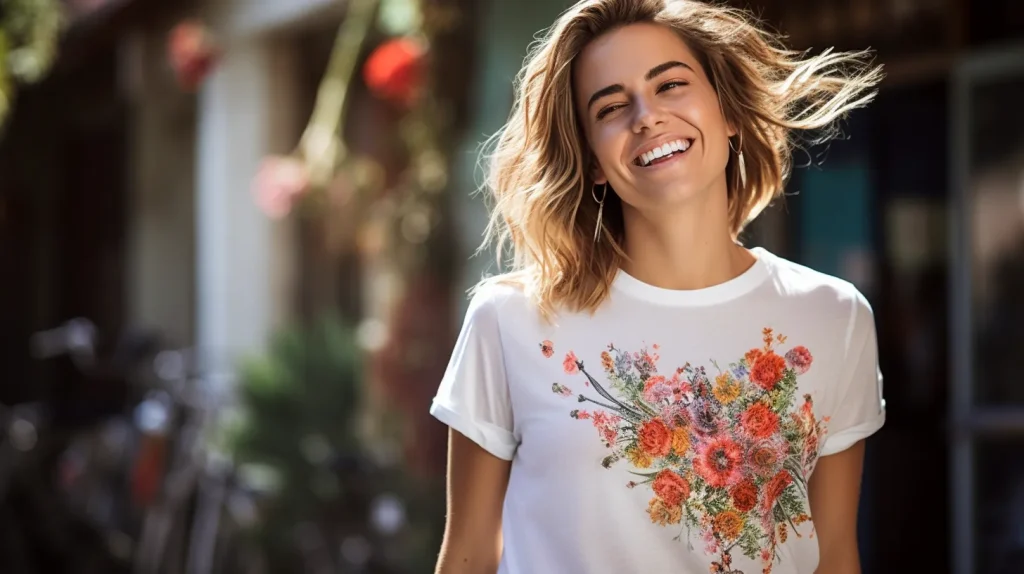Abstract
This article provides a practical framework for choosing from screen printed t-shirts, guiding consumers and organizations through the key factors that differentiate quality, durability, and value. It addresses considerations beyond just the design, focusing on garment selection, print quality assessment, ink types, and overall fit for purpose, empowering buyers to make educated decisions whether for personal use, branding, or events.
1. Introduction
In a market saturated with options, the process of simply choosing from screen printed t-shirts can be surprisingly complex. What might appear as a simple purchase involves discerning factors that greatly influence durability, comfort, and the lasting impact of your custom apparel. Whether you’re selecting merchandise for your business, uniforms for a team, promotional giveaways for an event, or a personal statement piece, understanding the nuances of screen printing quality is crucial. This guide aims to equip you with the knowledge to navigate the choices and ensure your investment yields a high-quality, long-lasting, and truly impactful screen-printed t-shirt.
2. Beyond the Design: Evaluating the T-Shirt Blank
The quality of the garment itself, often referred to as the “blank,” is foundational to a good screen-printed shirt.
2.1. Fabric Composition and Feel
- 100% Cotton: A classic choice. Look for ring-spun or combed cotton for a softer feel and smoother surface, which results in sharper prints. Standard cotton can be thicker and less soft but offers good ink absorption.
- Cotton Blends (e.g., Poly-Cotton, Tri-blends): These offer a balance of comfort, durability, and reduced shrinkage. Poly-cotton blends provide good shape retention and less wrinkling. Tri-blends (cotton, polyester, rayon) are known for their exceptional softness and a vintage, heathered look. Ensure the screen printing method is suitable for blends, as some inks react differently to synthetic fibers (e.g., dye migration on polyester).
- Weight (GSM/Oz): Fabric weight indicates thickness and durability. Heavier shirts (e.g., 6 oz or 180 GSM and above) tend to be more durable and opaque, often better for bold screen prints. Lighter shirts (4-5 oz or 140-160 GSM) are softer, more breathable, and suitable for warmer climates or a fashion-forward drape.
2.2. Construction and Stitching
- Seams: Inspect for even, tight, and consistent stitching. Double-stitched seams (especially on the collar, sleeves, and hem) indicate higher quality and greater durability, preventing unraveling or fraying after washes.
- Collar: A well-constructed collar should lay flat and retain its shape after stretching. Reinforced ribbing is a sign of a quality garment that won’t stretch out or sag over time.
- Fit and Sizing: Consider the intended audience. Standard/classic fit is looser, while fashion/retail fit is typically more tailored. Check sizing charts carefully, as sizes can vary significantly between brands. Pre-shrunk fabrics are highly recommended to avoid surprises after the first wash.
3. Discerning Print Quality: What to Look For
The actual screen print quality is paramount. A well-executed print should be vibrant, sharp, and durable.
3.1. Print Clarity and Detail
- Sharp Edges: Look for crisp, clean edges on all elements of the design (text, lines, shapes). Blurry, fuzzy, or “bleeding” edges indicate poor screen registration or improper ink viscosity.
- Solid Coverage: For solid colors, the print should be opaque and uniform, with no patchy or faded areas. You shouldn’t see the fabric color showing through the ink, especially on dark shirts.
- No Smudging or Misalignment: Check for any smudges, streaks, or ghosting (a faint secondary image). If there are multiple colors, ensure they are perfectly aligned (in “registration”) without gaps or overlaps where they shouldn’t be.
3.2. Hand Feel (Texture of the Print)
- Soft Hand vs. Heavy Hand: This refers to how the ink feels on the fabric.
- Soft Hand: Achieved with thinner ink layers or water-based/discharge inks. The print feels soft and integrated into the fabric, often preferred for comfort.
- Heavy Hand (or “Plasticky” Feel): Typically from thicker plastisol ink layers, especially if an underbase (a white layer under colors on dark shirts) is used. While durable and vibrant, it can feel stiff or like a “sticker” on the shirt. The ideal choice depends on preference and design.
- Flexibility: Gently stretch the printed area. The ink should stretch with the fabric without cracking or peeling. Cracking, especially on a new shirt, indicates improper curing or poor ink adhesion.
3.3. Color Accuracy and Vibrancy
- Color Match: If your order required specific colors (e.g., Pantone), compare the printed colors against your approved digital proof or color swatch.
- Vibrancy: Colors should be bright and true to the design, not dull or faded. Screen printing is known for its ability to produce rich, opaque colors.
4. Factors Influencing Your Choice of Screen Printed T-Shirts
Beyond just inspecting the product, consider these broader factors when choosing from screen printed t-shirts:
4.1. Purpose and Longevity Requirements
- Promotional Giveaways: If the shirts are for a one-off event or short-term promotion, you might prioritize cost-effectiveness over extreme durability, opting for standard cotton and plastisol ink.
- Uniforms/Merchandise: For apparel that will be worn frequently and laundered often, invest in higher-quality blanks (ring-spun cotton, blends) and durable printing (well-cured plastisol or high-quality water-based/discharge inks) for longevity.
4.2. Budget Constraints
- Quantity: Screen printing has setup costs per color, making it more economical for larger orders. If you need only a few shirts, other methods like Direct-to-Garment (DTG) printing might be more cost-effective.
- Color Count: More colors in a design mean more screens and higher costs. Simple, 1-3 color designs are most budget-friendly for screen printing.
4.3. Reputable Suppliers and Printers
- Portfolio and Reviews: Examine a printer’s portfolio to assess their quality. Read customer reviews for insights into their reliability, quality, and customer service.
- Communication: A good printer (whether local or online) will be transparent about their process, offer clear quotes, and communicate effectively regarding design requirements, lead times, and any potential issues. In Armenia, many local businesses like Printing.am, Printax, Oprint, and Prime Casual Wear offer screen printing services, often providing personalized consultation to help you choose the right options based on your specific needs and budget.
- Samples: If ordering in bulk, ask for a sample or physical proof of your design on the chosen blank before committing to the full order.
5. Conclusion
Choosing from screen printed t-shirts is an art of informed decision-making. By carefully evaluating the t-shirt blank’s fabric and construction, meticulously inspecting the print for clarity, feel, and color accuracy, and aligning your choice with your specific purpose and budget, you can ensure a successful outcome. This discerning approach guarantees that your screen-printed t-shirts not only look great but also stand the test of time, effectively serving their intended purpose, whether it’s building a brand, fostering team spirit, or simply expressing a personal passion.

